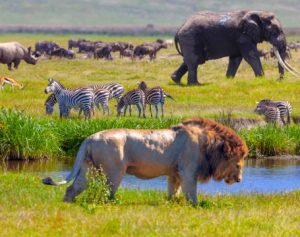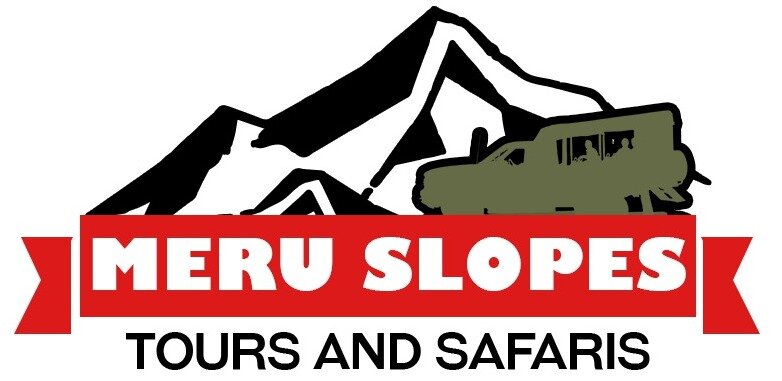Luxury Migration Safari Packages

Luxury Migration Safari Packages
Luxury Migration Safari Packages
Embark on a thrilling 11-day Luxury Migration Safari in Kenya and Tanzania, witnessing the awe-inspiring Great Wildebeest Migration. You’ll see thousands of wildebeest journey north through the Serengeti, cross the Mara River, and make their way to Kenya’s Masai Mara. In September, the herds scatter across the northern Serengeti and Masai Mara, with some remaining behind. By October, the migration continues south toward the central Serengeti via the Lobo area.
Detailed Itinerary
DAY 1: Arrival in Nairobi
Upon arrival in Nairobi, you will be greeted at the airport and transferred to your hotel for an overnight stay, allowing you to rest and prepare for the safari ahead.
DAY 2: Nairobi – Lake Nakuru National Park
After a delicious breakfast, you’ll have a safari briefing with our tour officer. Then, we’ll drive to Lake Nakuru, arriving just in time for lunch at the Lake Nakuru guest house. Afterward, enjoy an exciting afternoon game drive before returning to camp for dinner and an overnight stay. Lake Nakuru National Park is a birdwatcher’s paradise, home to over 400 bird species, including five globally threatened species. In addition, it is Kenya’s first national Rhino sanctuary, famous for its high concentration of Black Rhinoceros.
DAY 3: Lake Nakuru – Masai Mara
After breakfast, the journey continues as you travel through the stunning Great Rift Valley to the iconic Masai Mara. Upon arrival, enjoy lunch before setting off on an evening game drive. Dinner and overnight will be at Mara Kichakani Camp. The Masai Mara is renowned for its abundant wildlife, including lions, the Great Wildebeest Migration, and the Maasai people, who are famous for their unique culture.
DAY 4 & 5: Explore Masai Mara
These two days are dedicated to exploring the breathtaking Masai Mara. You’ll embark on morning and afternoon game drives, allowing ample time to see the diverse wildlife. For an added adventure, consider a hot air balloon safari (available for an additional $450 per person). Dinners and overnight stays will be at Mara Kichakani Camp. The Masai Mara boasts over 450 animal species and is the stage for one of Africa’s most incredible spectacles: the annual migration of wildebeest from the Serengeti.
DAY 6: Masai Mara – Musoma
On this day, you’ll drive through the southern part of the reserve, observing wildlife along the way as you head to the Tanzanian border at Isebania/Sirari. After crossing into Tanzania, you’ll continue to Speke Bay Lodge for dinner and an overnight stay.
DAY 7 & 8: Musoma – Serengeti National Park
Entering the Serengeti via the Ndabaka Gate, you’ll enjoy a full-day game drive through this incredible landscape. The next two days will be spent exploring the western corridor, with picnic lunches amidst stunning views. Even when the migration is quiet, the Serengeti offers some of the most captivating game viewing, including buffalo, elephants, giraffes, and numerous species of antelope. Dinner and overnight stays will be at Ikoma Safari Camp.
DAY 9: Serengeti – Ngorongoro Conservation Area via Olduvai Gorge
Today, you’ll drive southeast into the Ngorongoro Conservation Area, making a stop at the famous Olduvai Gorge. Here, you’ll enjoy a picnic lunch and visit the museum, where you can learn about ancient human fossils and local birdlife. Dinner and overnight will be at Rhino Lodge, located on the crater rim.
DAY 10: Ngorongoro Crater Tour
After breakfast, descend into the spectacular Ngorongoro Crater for a full-day tour with packed lunch. The day will be spent exploring this ‘Africa’s Eden,’ known for its rich wildlife and stunning views. Later, ascend back to the rim for dinner and an overnight stay at Rhino Lodge. The Ngorongoro Crater is a world-renowned natural wonder, formed over 2.5 million years ago from a massive volcanic mountain.
DAY 11: Ngorongoro – Arusha – Nairobi
On the final day, after breakfast, drive to Arusha, arriving in time for lunch. From there, board an afternoon shuttle to Nairobi, reaching the city by 6 PM. Finally, you will be dropped off at the airport for your departure flight, marking the end of an unforgettable safari.
Safari Package Details
Inclusions
- Transfers between the International Airport and Arusha.
- Two nights’ hotel accommodation in Arusha upon arrival.
- An extended 4×4 luxury safari jeep with a pop-up roof for optimal game viewing.
- A professional English-speaking safari guide.
- A professional safari cook.
- Entrance fees to all national parks, ensuring access to the best wildlife areas.
- Full-board camping accommodation during the safari.
- Camping fees at all national parks.
- Ngorongoro Crater fees, allowing for a comprehensive exploration of the crater.
- 18% VAT included in entrance fees.
- Government taxes, VAT, and service charges on accommodation and meals.
Exclusions
- Tanzania Visa.
- Personal expenses, such as laundry, telephone, and beverages.
- Optional tours, including hot air balloon rides ($550 per person; advanced booking required).
- Tips and gratuities for your safari guide and cook.
Pricing
Price: $3,850 USD per person.
This Luxury Migration Safari Package is carefully designed to provide a seamless and thrilling wildlife experience across two iconic countries, offering memories that will last a lifetime. Explore the beauty of Africa’s wilderness with our specially curated Luxury Migration Safari Packages.
